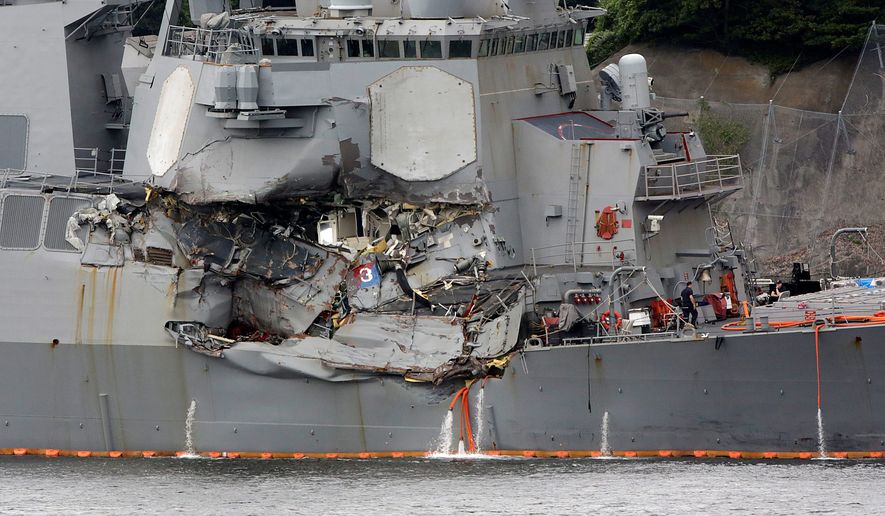The top Navy officer in charge of the sea service’s Pacific combat fleet stepped down this week, ahead of a reportedly scathing review of Navy operations under his command, which included a slew of deadly accidents involving U.S. warships.
Vice Adm. Thomas Rowden had announced plans to retire as head of Naval Surface Force Pacific after a pair of fatal accidents involving the Arleigh Burke-class USS McCain and USS Fitzgerald took place under his watch.
But Adm. Rowden’s immediate departure was one of several recommendations made by the Navy team reviewing the chain of events leading up to the incidents with the McCain and Fitzgerald, which left 17 sailors dead, as first reported by Defense News.
“Today, I have informed the chief of naval operations that this Thursday I will step aside earlier than previously planned as the commander, Naval Surface Forces, and commander, Naval Surface Force, U.S. Pacific Fleet,” Adm. Rowden said in a statement. “This was a difficult decision to make, but I make it with the best interest of the Surface Warfare community and the Navy in mind,” he added, according to Military.com
Rear Adm. Richard Brown, the current chief of Naval Personnel Command is slated to replace Adm. Rowden who had been at the helm of all Navy surface forces since August 2014. It remains unclear whether Navy officials are calling for Pacific Fleet Commander Adm. Scott Swift’s immediate resignation.
Adm. Swift, alongside Adm. Rowden, also announced his plans to retire from the sea service in the aftermath of the McCain and Fitzgerald incidents.
In what is now his final speech as surface warfare chief, Adm. Rowden called for patience and resolve from his service brethren, as Navy leaders sought to fix the problems that led to the catastrophic incidents in the Pacific.
“They need help, and by help, they mean time,” he said last week during the Surface Navy Association’s annual conference in Crystal City, Virginia. “Time will only come from two things, or a combination of them: more ships and fewer obligations. It is hard to see things any other way,” he added.
Last year’s calamities at sea in the Pacific were the culmination of deep-seated issues within the sea service’s budget, operations and culture stretching back decades that Navy leaders are only now attempting to address, sources say.
Prior to the fatal collisions involving the McCain and Fitzgerald, the Ticonderoga-class guided missile cruiser U.S.S. Lake Champlain collided with a South Korean fishing vessel off the country’s eastern coast last May, a month before the incident involving the Fitzgerald.
As a result, Adm. John Richardson ordered a worldwide 48-hour stand down of all service operations. The order was issued presumably to gain insight into the circumstances that led to three major at-sea collisions in the Pacific within four months, and to see if any other part of the fleet were susceptible to similar incidents.
• Carlo Muñoz can be reached at cmunoz@washingtontimes.com.




Please read our comment policy before commenting.